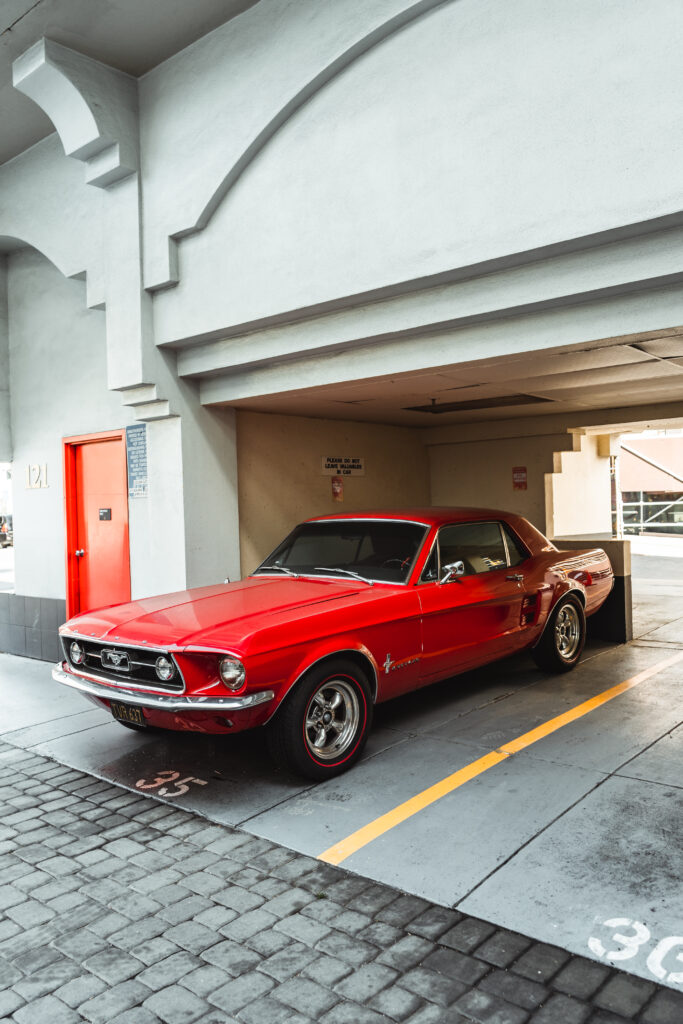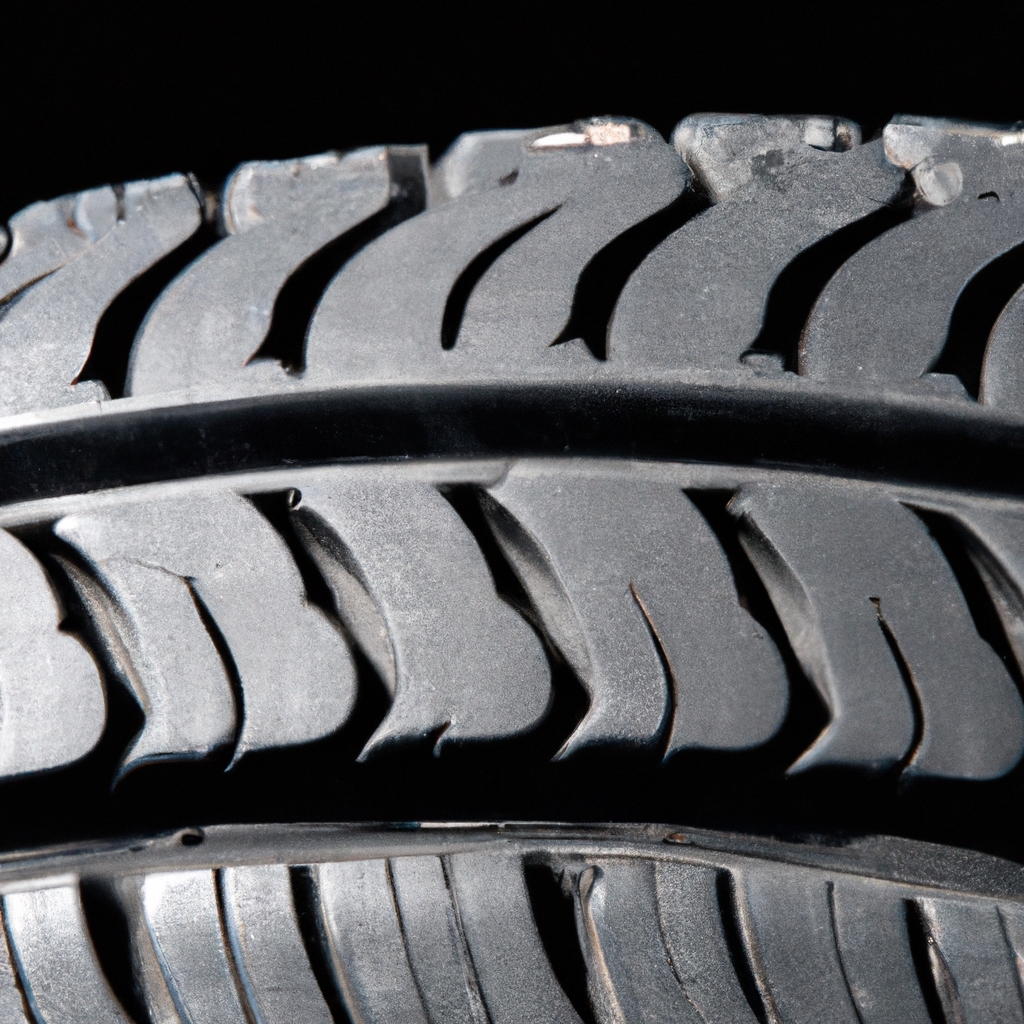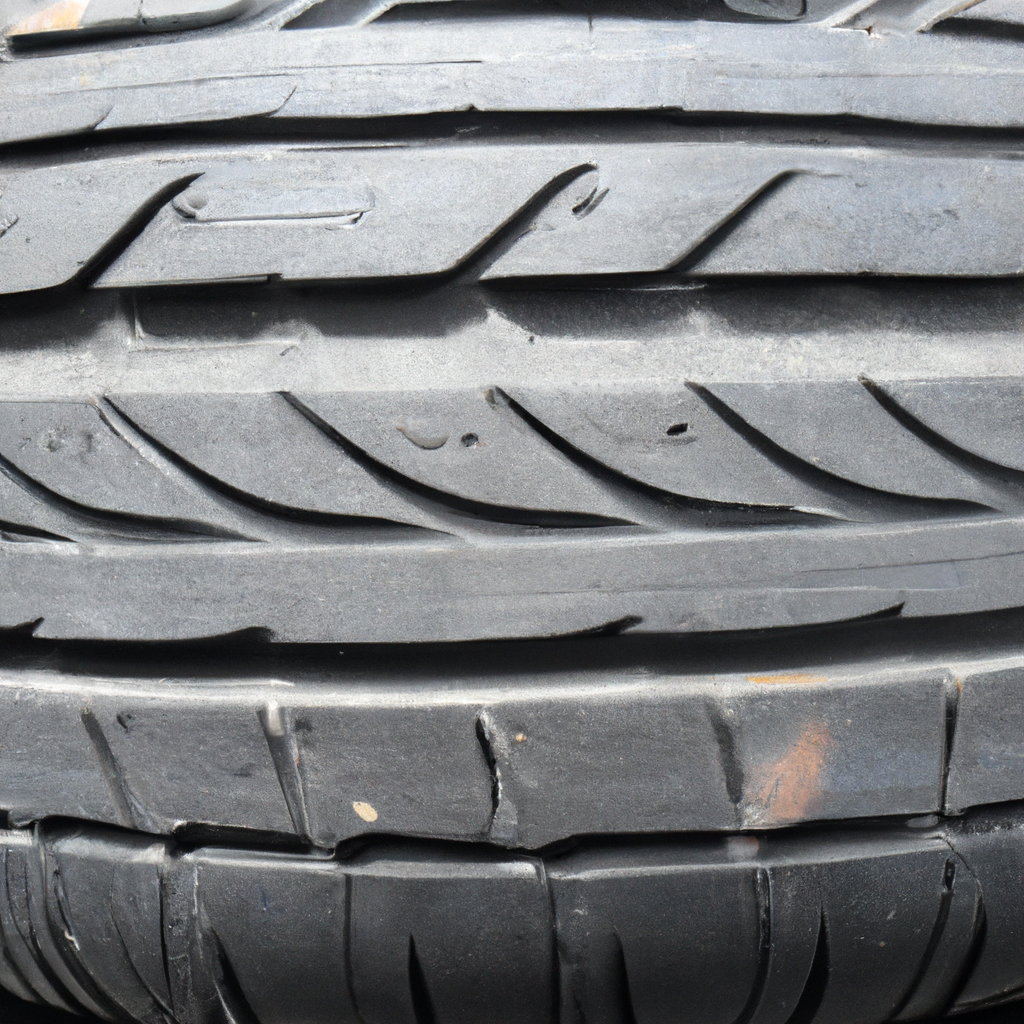Imagine this scenario: you’re faced with a flat tire on your vehicle, and you’re wondering if you can replace it with a regular tire instead of a run-flat one. It’s a common question that many car owners have pondered. In this article, we’ll explore whether mixing run-flat tires with regular tires on your vehicle is a viable option and what considerations you need to keep in mind. So, if you’re ready to find out if this mix-and-match approach is safe and practical, let’s dive right into it.
Understanding Run-flat Tires
What are run-flat tires?
Run-flat tires are specially designed tires that have reinforced sidewalls to support the weight of a vehicle even when the tire is punctured or completely flat. These tires are built with a unique internal structure that allows them to maintain their shape and support the weight of the vehicle, even without air pressure. Run-flat tires come in various models and brands, offering enhanced safety and convenience for drivers.
Advantages of run-flat tires
One of the main advantages of run-flat tires is their ability to keep you moving even after getting a flat tire. If you experience a puncture or a blowout, run-flat tires can continue to be driven for a limited distance at a reduced speed, usually up to 50-100 miles. This eliminates the need to immediately change the tire or call for roadside assistance. Run-flat tires also provide added stability and control, even when the tire is completely deflated, reducing the risk of losing control of the vehicle. Additionally, run-flat tires can save space in your vehicle by eliminating the need for a spare tire and jack.
Disadvantages of run-flat tires
While run-flat tires offer numerous advantages, there are also some drawbacks to consider. First and foremost, run-flat tires are generally more expensive than regular tires. The technology and materials used to make these tires contribute to their higher cost. Secondly, run-flat tires may provide a slightly firmer and stiffer ride compared to regular tires. This can result in reduced comfort, especially on rough or uneven road surfaces. Lastly, run-flat tires cannot be repaired in the same way as regular tires. Once a run-flat tire has been punctured, it is often recommended to replace the tire rather than repair it.
Understanding Regular Tires
What are regular tires?
Regular tires, also known as conventional or non-run-flat tires, are the standard tires used in most vehicles. These tires are designed to provide a smooth and comfortable ride while offering traction, handling, and performance in various road conditions. Regular tires do not have reinforced sidewalls like run-flat tires and rely on air pressure to support the weight of the vehicle. They come in different types, including all-season, summer, and winter tires, each suitable for specific weather and road conditions.
Advantages of regular tires
Regular tires offer several advantages, starting with their lower cost compared to run-flat tires. This makes them a more affordable option for many drivers. Additionally, regular tires provide a softer and more comfortable ride due to their flexible sidewalls. They absorb bumps and vibrations better, offering a smoother driving experience. Regular tires are also repairable in most cases, which can save you money by avoiding the need for a complete tire replacement.
Disadvantages of regular tires
One of the main disadvantages of regular tires is their vulnerability to complete deflation in the event of a puncture or blowout. When a regular tire loses air pressure, it compromises the vehicle’s handling and can increase the risk of an accident, requiring immediate tire replacement or assistance. Regular tires also lack the added safety of extended mobility that run-flat tires provide, meaning you may need to change the tire on the spot or wait for help. Lastly, regular tires generally have shorter tread life compared to run-flat tires, meaning they may need to be replaced more frequently.

Compatibility Issues
Can run-flat tires be mixed with regular tires?
While it is technically possible to mix run-flat tires with regular tires on the same vehicle, it is generally not recommended. Run-flat tires and regular tires have different handling and performance characteristics, and mixing them can affect your vehicle’s stability and overall safety. Additionally, the two types of tires may have different sizes, load ratings, and tread patterns, which can further impact their compatibility when used together.
Can regular tires be mixed with run-flat tires?
Similarly, mixing regular tires with run-flat tires is not advisable. The differences in handling and performance between the two types of tires can cause imbalances in your vehicle, affecting its stability and control. Additionally, mixing regular tires with run-flat tires may result in uneven wear and tear, potentially compromising tire performance and safety.
Potential problems of mixing run-flat and regular tires
Mixing run-flat tires with regular tires can lead to a range of problems. Differences in tire sizes can affect the accuracy of your vehicle’s speedometer and traction control systems. The handling characteristics of your vehicle can also be compromised, potentially affecting your ability to control the vehicle in emergency situations. Additionally, mixing run-flat and regular tires can result in uneven tire wear, reducing the lifespan of both types of tires. It is essential to consult with a tire professional and follow the manufacturer’s recommendations to avoid compatibility issues and potential safety risks.
Performance and Handling
Impact on vehicle performance
The choice between run-flat tires and regular tires can impact your vehicle’s performance. Run-flat tires, with their reinforced construction, may provide a slightly different driving experience compared to regular tires. They offer enhanced stability and control, even when a tire is deflated, allowing you to continue driving for a limited distance. However, run-flat tires can be slightly stiffer and may affect the overall ride comfort, especially on rough road surfaces. Regular tires, on the other hand, provide a softer and more comfortable ride but do not offer the extended mobility of their run-flat counterparts.
Handling differences between run-flat and regular tires
Handling characteristics differ between run-flat and regular tires. Run-flat tires are designed to provide additional stability and control even in the event of a flat tire. Their reinforced sidewalls help maintain the tire’s shape, reducing the risk of loss of control. Regular tires, without the reinforced sidewalls, rely on proper air pressure for optimal handling. If a regular tire loses air pressure, it can result in compromised handling and reduced traction, increasing the risk of accidents. It is important to consider these handling differences when choosing between run-flat tires and regular tires.
Impact on braking and acceleration
Both run-flat tires and regular tires can impact braking and acceleration performance to some degree. Run-flat tires, with their reinforced construction, may offer improved stability and control during emergency braking situations, even with a deflated tire. However, they may take slightly longer to stop compared to regular tires due to their firmer sidewalls. Regular tires, when properly inflated, provide optimal braking and acceleration performance. However, if a regular tire becomes flat or deflated, it can significantly affect braking distances and acceleration response. It is crucial to ensure regular tire maintenance to maintain optimal performance in these areas.

Tire Wear and Lifespan
Effects on tire wear
Run-flat tires and regular tires may exhibit different wear patterns due to their construction and usage characteristics. Run-flat tires, with their stiffer sidewalls, may experience more uneven tread wear, especially if they are driven in a deflated state for extended distances. Regular tires, when properly maintained and inflated, tend to have more consistent wear patterns. However, factors such as driving habits, road conditions, and wheel alignment can also contribute to uneven tire wear for both run-flat and regular tires. Regular tire rotation and alignment checks can help maximize tire wear and lifespan for both types of tires.
Comparison of lifespan between run-flat and regular tires
The lifespan of run-flat tires and regular tires can vary depending on various factors, including driving conditions and maintenance practices. Run-flat tires generally have a longer lifespan compared to regular tires due to their reinforced construction and resilience to punctures. However, the overall lifespan of a tire is dependent on factors such as tread wear, tire age, and maintenance. Regular tires may need to be replaced more frequently due to wear and tear, but they can also be repaired in many cases, extending their usability. Regular inspection, maintenance, and following the manufacturer’s recommendations are essential for maximizing the lifespan of both types of tires.
Considerations for tire rotation and replacement
Proper tire rotation and replacement practices are important for maintaining optimal tire performance and longevity. For vehicles equipped with run-flat tires, it is generally recommended to rotate the tires regularly to ensure consistent wear and performance. However, it is crucial to consult the tire manufacturer’s recommendations, as some run-flat tires may have specific rotation requirements. In the case of mixing run-flat and regular tires, it may be necessary to replace all tires at once, rather than replacing a single tire, to maintain the balance and compatibility of the tire set. Consulting with a tire professional can provide valuable guidance on tire rotation and replacement practices for your specific vehicle and tire combination.
Safety Considerations
Impact on vehicle safety
The choice between run-flat tires and regular tires can have a significant impact on vehicle safety. Run-flat tires provide added safety by allowing you to continue driving for a limited distance, even after a complete loss of air pressure. This can be particularly beneficial in situations where immediate tire replacement or assistance may not be readily available. Regular tires, on the other hand, are more susceptible to complete deflation if punctured or blown out, potentially compromising vehicle handling and increasing the risk of accidents. It is essential to consider the safety implications of tire choice and ensure proper maintenance and tire inspections for optimal safety on the road.
Risk factors of mixing run-flat and regular tires
Mixing run-flat tires with regular tires can introduce various risk factors that can compromise vehicle safety. Differences in performance characteristics, handling, and traction can result in imbalances and reduced vehicle stability. Uneven tire wear patterns can further exacerbate these risks. In emergency situations, the handling and control of the vehicle may be compromised, potentially leading to accidents or loss of control. It is important to note that mixing run-flat and regular tires may also void any warranties or insurance coverage on your tires or vehicle. To ensure optimal safety, it is recommended to stick with one type of tire and consult with a tire professional for guidance on tire selection and maintenance.
Safety tips for mixed tire setups
If you find yourself in a situation where you must drive with mixed tire setups, there are a few safety tips to keep in mind. First, ensure that tire sizes, load ratings, and tread patterns are as closely matched as possible between the run-flat and regular tires. This will help minimize imbalances and potential handling issues. Regularly check tire pressures and inspect for any signs of uneven wear or damage. Additionally, it is important to drive cautiously and avoid sudden maneuvers or aggressive driving, as mixed tire setups can affect vehicle stability. If possible, consult with a tire professional to ensure the safety and compatibility of your mixed tire setup.

Manufacturers’ Recommendations
What do tire manufacturers suggest?
Tire manufacturers provide specific recommendations when it comes to tire selection and usage. It is advisable to consult the manufacturer’s guidelines and recommendations to ensure optimal performance, compatibility, and safety. Most tire manufacturers recommend using either run-flat tires or regular tires exclusively, rather than mixing the two types. This is due to the differences in performance characteristics and potential safety risks associated with mixing tires. Following the manufacturer’s recommendations can help ensure that your tires meet the required standards and specifications for your specific vehicle.
Run-flat tire recommendations
For vehicles equipped with run-flat tires, it is important to follow the manufacturer’s recommendations for tire maintenance, usage, and replacement. Regular inspections of tire pressure, tread depth, and signs of wear are essential. In the event of a puncture or encountering a flat tire, it is crucial to limit driving distance and speed to the specified limits provided by the tire manufacturer. Additionally, the manufacturer may provide specific guidelines for tire replacement and repair, as well as recommendations for tire rotation and usage.
Regular tire recommendations
When using regular tires, it is equally important to adhere to the manufacturer’s recommendations for tire maintenance and usage. Regularly check tire pressure, rotate the tires as recommended, and inspect for any signs of wear or damage. Follow the manufacturer’s guidelines for tire replacement and repair. It is essential to ensure that the regular tires are suitable for the specific vehicle and driving conditions, considering factors such as load capacity, speed rating, and weather conditions.
Tire Size and Load Ratings
Importance of matching tire sizes
Matching tire sizes is crucial for optimal performance and safety. The size of the tires should be compatible with the vehicle’s specifications as recommended by the manufacturer. Using tires of incorrect sizes can impact the accuracy of speedometers, traction control systems, and overall vehicle balance. When mixing run-flat tires with regular tires, it is important to ensure that the sizes of the tires are as closely matched as possible to maintain proper handling and stability.
Load rating compatibility between run-flat and regular tires
Load rating compatibility is another important consideration when mixing run-flat and regular tires. The load rating indicates the maximum weight that a tire can safely carry at a given pressure. Mixing tires with different load ratings can affect the distribution of weight and balance, potentially compromising the vehicle’s handling and safety. It is crucial to consult the tire manufacturer’s recommendations and ensure load rating compatibility when combining run-flat and regular tires.
Determining the right tire size and load rating
To determine the right tire size and load rating for your vehicle, it is best to consult the manufacturer’s recommendations or refer to the information provided on the vehicle’s tire placard, typically located on the driver’s doorjamb or inside the fuel filler door. The tire placard will indicate the recommended tire size, load rating, and inflation pressures for your specific vehicle. It is essential to follow these guidelines to ensure optimal performance, safety, and compatibility.

Cost Considerations
Price comparison between run-flat and regular tires
When considering the cost of tires, run-flat tires are generally more expensive than regular tires. The technology and materials used in the construction of run-flat tires contribute to their higher price tag. Additionally, run-flat tires may require specialized equipment or knowledge for installation, potentially adding to the overall cost. Regular tires, on the other hand, are typically more affordable, making them a budget-friendly option for many drivers. However, it is important to weigh the cost against the benefits and safety features offered by run-flat tires.
Potential cost implications of mixing tires
Mixing run-flat tires with regular tires can result in potential cost implications. In some cases, using incompatible tire sizes or load ratings can lead to premature tire wear or damage, requiring the replacement of the affected tires. Uneven wear patterns caused by mixing tire types can also reduce the overall lifespan of the tires, resulting in more frequent tire replacements. Additionally, mixing tires may void any warranties or insurance coverage related to tire or vehicle damage. To avoid potential cost implications, it is recommended to consult with a tire professional and follow the manufacturer’s recommendations for tire selection and usage.
Long-term cost considerations
When considering the long-term costs of run-flat tires versus regular tires, several factors come into play. Run-flat tires, despite their higher initial cost, can potentially save money in the long run. Their puncture resistance and extended mobility capabilities can help avoid the need for immediate tire replacements or roadside assistance, potentially saving on towing fees and time. Regular tires, while more affordable initially, may require more frequent replacements due to wear and punctures. Additionally, punctured regular tires may require immediate repair or replacement, which can incur additional costs. It is important to weigh the long-term cost implications and the specific driving needs and conditions to make an informed decision on tire selection.
Professional Advice
Consulting with a tire professional
When it comes to selecting and maintaining tires, it is highly recommended to consult with a tire professional. They can provide expert advice based on your specific vehicle, driving habits, and local weather conditions. A tire professional can help you navigate the options available, including the choice between run-flat tires and regular tires. They can provide valuable insights into compatibility, performance, and safety considerations, ensuring that you make an informed decision.
Getting expert opinion
In addition to consulting with a tire professional, seeking expert opinions from reputable sources can further enhance your knowledge and understanding of tires and their usage. Relying on unbiased reviews, consumer reports, and tire manufacturer recommendations can provide valuable insights into the performance, safety, and reliability of different tire types, including run-flat tires and regular tires. Consider reaching out to trusted automotive experts, tire retailers, or online forums to gather opinions and make an informed decision about the best tire options for your specific needs.
Seeking professional installation and maintenance
Proper installation and maintenance of tires are crucial for optimal performance, safety, and longevity. It is highly recommended to seek professional installation and maintenance services from qualified technicians. They have the knowledge, experience, and equipment required to ensure correct tire mounting, balancing, and alignment. Regular inspections, tire rotations, and alignments can also be performed by professionals to maximize the lifespan and performance of your tires. Prioritize safety and consult with professionals for all tire-related services to ensure the continued reliability and performance of your vehicle.


